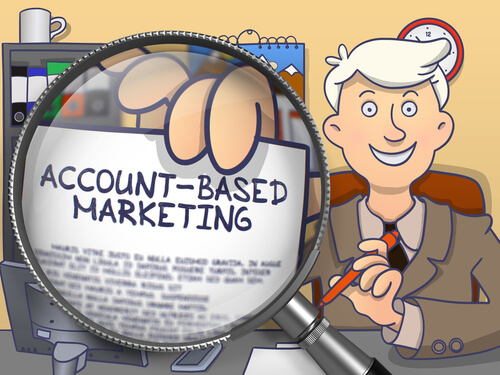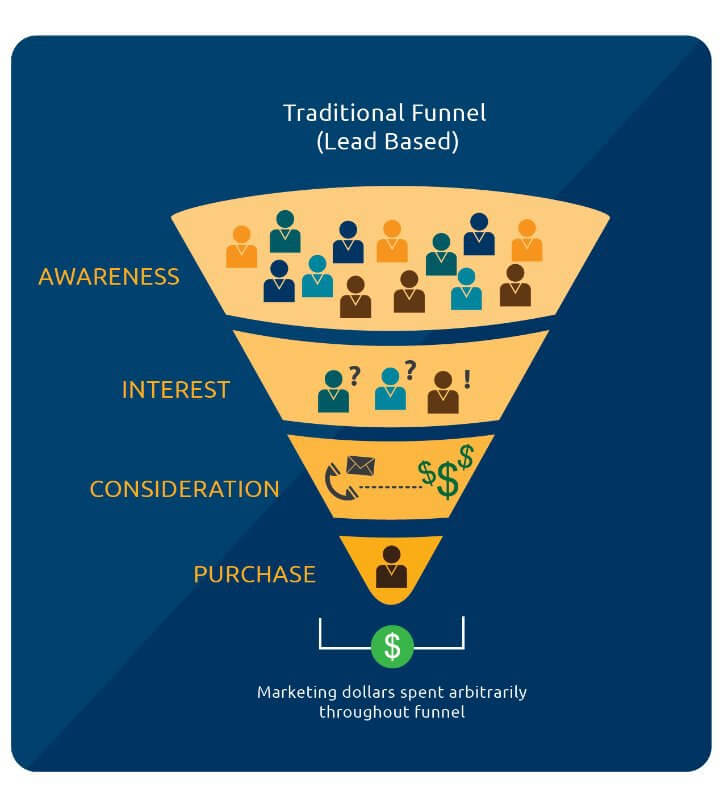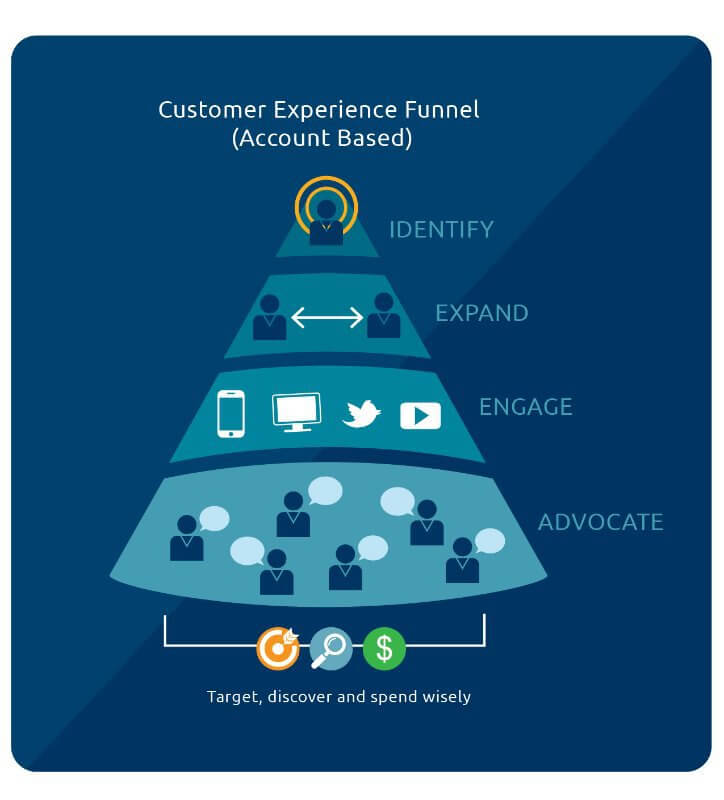 For a lot of business-to-business (B2B) companies, especially those that work with large businesses, it’s impossible to research the latest marketing trends and ignore the latest: Account based marketing.
For a lot of business-to-business (B2B) companies, especially those that work with large businesses, it’s impossible to research the latest marketing trends and ignore the latest: Account based marketing.
While the concept is nothing new, in the past few years tremendous resources have been dedicated to fine-tuning its strategy and making the model more mainstream and accessible to modern marketers.
The result is that B2Bs are seeing exponential growth in accounts and leads, shorter sales cycles, and—ultimately—more revenue.
It begs the question: Does account based marketing live up to all the hype?
What is Account Based Marketing?
You’re likely already familiar with the importance of defining your ideal customer—those who best fit your product or service.
With account based marketing, you determine your ideal customer by identifying best fit accounts first and the personas within those accounts.
Why is this important?
Because sales teams typically focus on accounts, and marketing focuses on personas and leads.
For account based marketing to be effective, however, it’s important both teams work together.
Alignment of sales and marketing effectively increases productivity and revenue because both departments are focused on the same goal: Find the best leads and convert them to sales.
As well, today’s B2B buying decisions are not made by one person anymore.
It’s not enough to schmooze the chief financial officer for a few months until he signs off on a deal.
Today, you have to create advocates for your brand throughout all levels of an organization, from day-to-day users, to managers, all the way up to the person authorizing the check.
Identifying who these people are—the influencers, decision makers, and those with buying power—is essential for a successful account based marketing strategy, as it takes an average of five people within an organization to make a decision.
Once you’ve identified your target accounts and buyers within, you have to figure out how to connect with them.
Do they prefer personal interaction or email marketing?
Are they an “always on” organization that prefers their messages in small chunks via mobile and social media?
The ability to send the right message via the right channel, to the right people propels your marketing efforts to the next level, which is precisely what account based marketing is all about.
Account Based Marketing vs. Inbound Marketing?
The traditional leads-based marketing funnel relies on inbound marketing strategies.
It focuses on bringing large quantity of leads to your website with the hope that each subsequent marketing message or email campaign will weed out the unqualified ones, as the remaining leads funnel into prospects with interest, decision makers with consideration and eventually a single person with purchasing power.

In this scenario, marketing and sales teams are often disjointed as marketing has a quota of new leads to meet while sales is trying to zero in on the truly qualified leads.
Now flip the funnel.

The narrowest part of the funnel is now on top and these are the best-fit accounts you have identified.
The focus shifts from quantity of leads to quality of accounts.
As you begin to expand into each account, you will uncover the various personas who are the key players and decision makers.
Further down the funnel, you will continue to expand your reach by engaging with each person through their preferred channels and offering timely, relevant, and highly personalized content that provides a solution or fills a need.
When your offering and their needs are well aligned, leads quickly turn into prospects; prospects turn into customers; customers turn into advocates for your brand.
In this scenario, marketing and sales teams naturally align by allowing them to focus on a set of predefined best fit accounts and goals.
An Account Based Marketing Campaign
For a successful account based marketing campaign, your marketing and sales team must work together from start to finish to:
- Identify best-fit accounts. If you’re moving away from a leads-based strategy and starting from scratch, consider working with a smaller test group of accounts before revamping your entire marketing strategy.
- Use account based intelligence to identify personas within each account. This provides in-depth information about each lead within your account, such as title/role, phone number/alt number, assistant, manager, colleagues, when they’re in/out of the office, and what their role is in the buying process. It allows you to go deep and wide, expanding into a target account by uncovering new and enhanced leads.
- Determine the best channels for communication. Some leads will prefer email and videos while others will prefer mobile and social media. In account based marketing, you can figure out what is best and for whom, really easily.
- Develop content. Your content should be targeted and personalized for each lead within an account, and it should be easily deployed via the appropriate channel (a whitepaper download via mobile might not be the best pairing of content and channel).
- Create a schedule. Get back to the basics by creating an editorial calendar to deliver content to each channel on a consistent basis. Too often and you might be seen as spammy; too seldom and you might be forgotten. Use the response of your leads to guide your campaign frequency.
- Monitor and follow-up. While basic metrics are still important, account based marketing campaigns should monitor certain account-based metrics that give a more clear picture of the role marketing plays in the awareness, engagement, and overall influence of sales outcomes. This further aids in better alignment of sales and marketing and provides measurable accountability. As with any new strategy, it’s important follow-up on results and to make any necessary changes along the way.
Does Account Based Marketing Live Up to the Hype?
The answer is YES! There are many benefits to account based marketing including:
- Clear ROI. When you’re targeting specific, best-fit accounts, tracking results becomes much easier.
- Personalization. Identifying valuable account based intelligence allows you to better segment your lists and personalize messages. Personalized messaging = more engagement = more sales.
- Increased sales opportunity. Your sales team can often uncover opportunities to be “first in” after important changes occur within your accounts. According to the founder of ShiftSelling, Craig Elias, first in wins the sale up to 74 percent of the time.
- Alignment of sales and marketing. Account based marketers work closely with sales to identify accounts, map out, and implement strategies and track progress.
- Increased revenue. According to Hubspot, B2Bs whose sales and marketing teams are well aligned experience a 20 percent growth in revenue annually, versus a decrease of four percent with teams that are poorly-aligned.
Bottom line: With new research every day that points to the benefits of an account based marketing strategy, it’s safe to say it is no longer the latest hype, but instead has become firmly rooted in the B2B marketing book of best practices.
image credit: shutterstock, flipmyfunnel